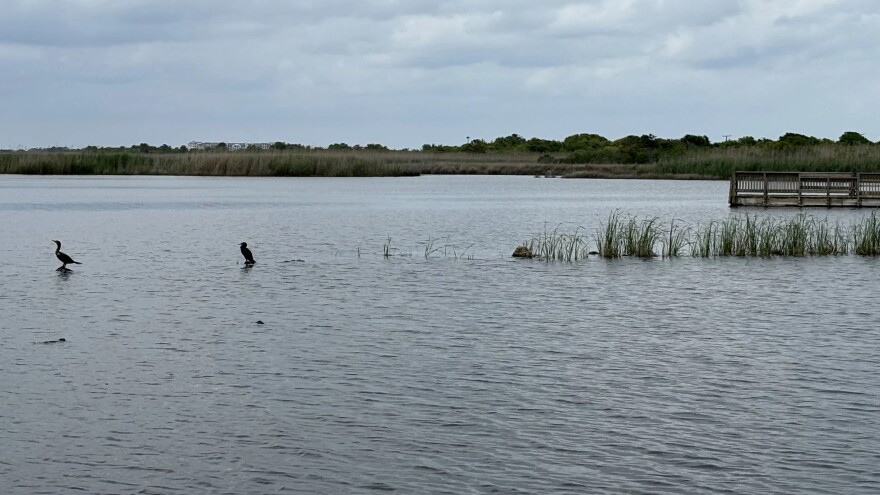Read the original story on the WHRO website.
The marshes of Back Bay National Wildlife Refuge provide crucial habitat for local wildlife and help slow down waves that contribute to chronic flooding issues.
But over the years, rising waters have started to swamp the marsh. Water pushing in from North Carolina overtakes wetlands, and sea level rise makes it worse.
“It’s just eroding away the existing marshes,” said Kristina Searles, a stormwater engineer with the city of Virginia Beach. “It’s just kind of a ball [of problems] that keeps on rolling.”
During the past century, more than 2,000 acres of marsh has been lost to open water at Back Bay, according to the city, as well as about 70% of underwater plants.
Searles is now managing a massive new effort to restore about 47 acres of habitat above and below water.

The project, using what are known as marsh terraces, will be the first of its kind on the East Coast.
It’s part of the city’s Flood Protection Program launched by a 2021 bond referendum that allowed the Virginia Beach to issue $567.5 million in bonds for resilience work.
The key problem in Back Bay is wind tide flooding, when sustained southerly winds push water north from the Albemarle and Currituck sounds. The water has nowhere to go, and eventually floods into low-lying areas of southern Virginia Beach.
These wind-driven flooding events used to be rare, but the city said it’s seen more than five in the past four years.
The disappearance of marshland in the refuge has opened up new pathways for water to flow into the city.
The goal of the new project is to strategically place manmade lines of marsh to help slow down water entering the area. That would mitigate flooding while serving as a wildlife habitat and promoting the growth of aquatic vegetation in between the terraces.
Virginia Beach will construct 41 marsh terraces around Bonney Cove, each about 15 to 30 feet wide.

They’re built using a base of “geo bags” — woven fabric filled with sand, Searles said. Officials then top the little islands off with slurry mix, topsoil and greenery including saltgrass and bald cypress trees.
Much of the topsoil will be repurposed from the Nimmo Parkway construction project at Sandbridge Road, said CJ Bodnar, stormwater technical services engineer with the city.
States along the Gulf Coast have been employing marsh terraces for years, with studies showing their success. But Virginia Beach will be the first to try it along the Atlantic.
Bodnar said the East Coast has historically turned to strategies like floodwalls, which wouldn’t work for a place like Back Bay.
“Because of how much of a natural resource it is for the city, we wanted to partner with the Back Bay National Wildlife Refuge to come up with something that would be beneficial to both of us,” he said. “Putting a wall up doesn't help anybody from an ecological standpoint.”
He hopes the marsh terraces can also drive ecotourism to the refuge through fishing and kayaking.
Virginia Beach plans to put the project up for bid this summer and expects construction to cost up to $50 million. The city already secured about $15 million in grant funding, including through the state’s Community Flood Preparedness Fund.


